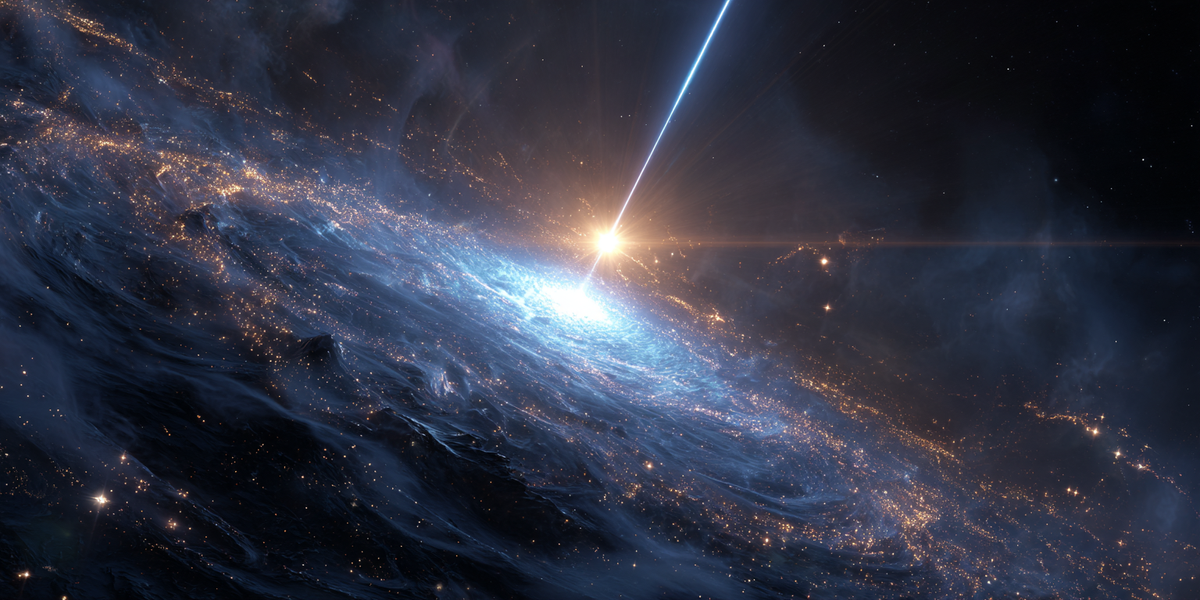In the crowded heart of the globular cluster Terzan 5, about 18,000 light-years away in Sagittarius, lies a neutron star that makes even seasoned astrophysicists pause. Designated PSR J1748−2446ad, it rotates once every 1.395 milliseconds — faster than the blades of any turbine, faster than any other pulsar known. At its equator the surface is hurtling along at nearly a quarter the speed of light, yet it holds together by sheer gravitational ferocity.
This object is not just fast; it is extreme. Its escape velocity is roughly 60% of the speed of light. Its surface gravity is about a hundred billion times stronger than Earth’s, strong enough to crush atoms into exotic states of matter. To “land” on it is a fantasy beyond physics: no grappling hook, suit, or spacecraft could withstand the tidal stresses, the crushing pull, or the furnace-hot radiation. Even standing at the equator, if it were possible, you would find your time slowed by relativity — ticking at about four-fifths the rate of distant observers.
Yet PSR J1748−2446ad does not exist in complete solitude. It is locked in a binary with a star that is, in a sense, being punished for its companionship. The neutron star’s partner is at least 0.14 solar masses, swollen and distorted, orbiting once every 26 hours. The relationship is visibly violent: for nearly half the orbit, the pulsar’s radio beams vanish behind clouds of plasma driven off the companion. What we witness is an ongoing act of erosion.
This dynamic has a clear history. In the past, gas streaming from the companion accreted onto the neutron star, spinning it up to its record-breaking pace. That era of “recycling” ended once the pulsar’s magnetic fields and particle winds grew too strong. Now, instead of accepting more matter, the pulsar lashes back, heating and stripping its companion in a process astronomers compare to the predations of a “black widow” spider. Eventually, the companion may be whittled away entirely, leaving the pulsar truly alone.
Does this ablation slow the pulsar, in some inverted echo of the process that spun it up? In principle, yes: as the pulsar drives off its partner’s gases, the outflow interacts with its magnetic field and creates drag. But this drag is vanishingly small compared to the momentum the neutron star already carries. Millisecond pulsars are astonishingly stable; their natural spin-down occurs over billions of years, longer than the probable lifespan of the companion itself. In effect, the pulsar will keep whirling almost unchanged long after its partner has been dissolved into nothingness.
It is hard not to see in this a kind of cosmic allegory. A star that once shared its material to sustain another is now being undone by that same partner, reduced orbit by orbit, eclipse by eclipse. PSR J1748−2446ad is a reminder that the universe is not always a gentle place. Some objects really are serious about their solitude — and they enforce it with unimaginable violence.

Member discussion: